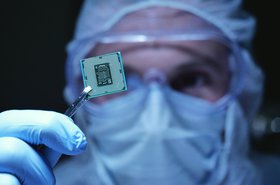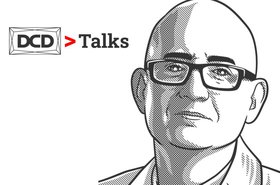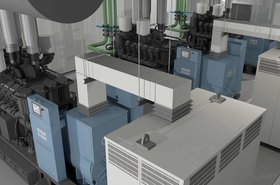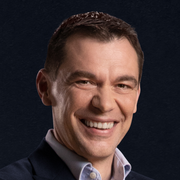For suppliers to the data center market, ensuring that their customers get what they need, when they need it, means finding ways to be agile, adaptive, and responsive - ready to provide much more than just what is on the data sheet.
Genset manufacturers that used to market their wares based on their peak power-generation capabilities must now offer customizations and innovative solutions that enable data center architects to optimize their designs for specialized uses and specific locations.
This trend is being driven by rapid growth in demand for data centers, and a diversification of their architectures to support new use cases. According to market analysts Gartner, end-user spending on global data center infrastructure is expected to reach $200bn in 2021, up six percent on 2020’s figure. This bold statement hides the fact that a one-size-fits-all approach to data center system design and integration is no longer appropriate for meeting customers’ needs.
New data center architectures are taking an increasingly important role in providing the digital services that we have come to rely upon. The growth of home working during the pandemic increased demand for cloud services and distributed it more widely than business data traffic had been before, creating demand for more localised computation. And the uptake of 5G networks and the Internet of Things ecosystems are also driving computation to the edge of networks.
Data center architects need to work from the ground up, adapting their plans to fit locations with complex requirements. Key component suppliers will have to be equally flexible while continuing to meet consistent global standards. Those suppliers that have end-to-end design and manufacturing control of their offerings, rather than simply packaging parts from other vendors, will have a particular advantage in meeting rapidly changing customer needs.
Standard elements of a genset, such as the engines, provide a secure foundation and basic building block for any mission-critical data center power project. Typically, a mission-critical backup genset has a stored energy source (usually diesel), an engine, alternator, control interface, fuel system and electrical switchgear. The genset must also be compatible with any uninterruptible power supply and all the other associated power equipment installed on site.
Although peak power generation capacity is important in choosing a genset, its footprint and volume is increasingly a deciding factor, especially in edge data centers. This is driving demand for gensets with increased power density and more efficient cooling. Other factors, such as effective noise reduction and exhaust emission control are also becoming important to ensuring that gensets can be successfully integrated into these new operating environments. If operators are going to move data centers into urban or suburban areas, they need to ensure their facilities will always be good neighbours.
Building blocks
Data center equipment suppliers who want the flexibility to serve global demand for customised products on short timescales need to think of their offerings as basic building blocks supported by the rich set of skills and facilities necessary to integrate them quickly to meet the client’s needs. Kohler has been using this strategy successfully to provide generating capacity for co-location facilities and data centers in demanding markets such as banking and telecoms. It designs its own engines for powering the generators and provides gensets that include the engine, generator, control equipment, fuel and acoustic treatment as well as the interfaces necessary to switch from grid power to on-site generation automatically.
To take one example of this customer-centric thinking, gensets should be packaged in several formats, including canopies and containers, to match different site requirements.
Edge data centers can be powered with a genset producing up to 5MW, typically packaged within a 20-foot, skin-tight canopy that can be customized to suit site conditions.
Mid-range gensets for powering co-location facilities are typically housed in custom built 40-foot ISO style containers, so they can be stacked alongside shipping containers for ease of transportation.
Hyperscale data center builds may need on-site generating capacity of up to 500MW, and the gensets that provide this are typically built into walk-in containers, for security and ease of maintenance. They also have thicker walls than less powerful gensets, to improve acoustic performance.
All these containment options can be customized to adjust the position of associated equipment such as the fuel tank, transformer, and switchgear. It is also possible to adjust the position of features such as cable entries and exits, air inlets and exhaust outlets to match the user’s needs.
Systems integration strategies
The best genset in the world is of little value if it is difficult to integrate with the system that it has been designed to serve. As previously discussed, customization options can ensure that the genset has the right power output, power density, noise, and emissions controls, and is packaged so that it is easy to connect to key services. But it also needs electrical switchgear so it can provide prime power in case of emergencies, or cost-saving local generation to reduce a data center’s peak demand, and automatic transfer switches to ensure a smooth transfer of power from the utility provider to the generator and back.
Enabling data center designers to specify other features, such as fuel storage tanks and management systems, electrical connection boxes and alarm modules, helps them integrate the genset into site-wide power management systems. Similarly, custom controls with advanced networking facilities can simplify remote monitoring and make it easier to integrate genset management into a site-wide site monitoring and control system.
Data center architects who are under pressure to produce an optimized design that can be quickly implemented in a cost-effective way need to work with suppliers who can provide a collaborative relationship and deep engagement, from initial enquiry to final site sign-off.
They need to work with suppliers that are structured to enable rapid customization, and willing to enter deep collaborations to enable rapid convergence on the right solution for the project in hand.
Kohler has been providing power solutions for more than a century, and now designs, manufactures and tests most of its data center generators at its 42,800m2 plant in Brest, France, where it hosts its headquarters functions, design facilities, in-line and cell-based manufacturing systems, test cells, laboratories, and training areas. The facility gives Kohler the end-to-end design and manufacturing facilities necessary to enable the rapid customization and fast innovation needed to service rapidly changing customer needs.
More...
-

How Kohler thinks big and designs small
Density is increasing in order to keep up with demand
-

DCD>Talks scale with Ian Wilcoxson, Kohler
We sat down with Ian Wilcoxson, the Channel Manager (Data Centres) for EMEA Power Solutions at KOHLER-SDMO at our DCD connect event to talk about data centers at scale
-

Sponsored Kohler brings BIM digitalization to construction
Kohler is bringing digital transformation to the construction industry at large via the BIM Object portal



